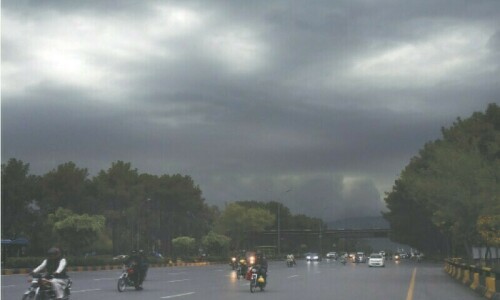AS the security forces close in on the centre of gravity of Pakistani militancy in South Waziristan, the country is holding its breath, both in anticipation of good news from South Waziristan and in apprehension of bad news from the cities and towns. It's early days yet in Operation Rah-i-Nijat, but initial reports suggest that the army's planning has been careful and professional. Target selection for bombing runs by the jets does not appear to be indiscriminate and the troops on the ground have been aided in their movement by sophisticated equipment that the army has quietly deployed. Protecting the population is key in counter-insurgency doctrine and the army appears to be aware of this. However, there are limitations when it comes to using a blunt tool like a conventional army as a surgical instrument that kills or captures the enemy without causing 'collateral damage' to the civilian population.
Given the virtual blackout of news from independent, non-army sources in the area, we cannot be sure to what extent the army's claims are true and we can only hope that mistakes are not being covered up, but being studied to ensure that civilian losses are minimised. While it is true that the population in South Waziristan is only a fraction of that in Malakand division, it is also true that it has taken just several thousand militants, perhaps 20,000 at most, in the former area to cause incalculable damage to the state. Therefore, 'losing' even a fraction of the population in South Waziristan because of the application of excessive, indiscriminate force could mean that the militants may be able to replenish their ranks and live to fight another day.
There is a further problem for the state it will be difficult to know when 'victory' has been won. A simple metric may be that once the security forces retake control of the Baitullah Mehsud network's strongholds in South Waziristan, victory can be declared. But consider this despite the strongholds being squeezed and blockaded since the summer and despite the death of Baitullah Mehsud, suicide bombings and fidayeen attacks linked to South Waziristan have not dropped off; indeed after a lull in the August-September period, they have returned with a vengeance. What this points to is that while the centre of gravity of Pakistani militancy may lie in South Waziristan, the spokes have spread across the country and they may be able to operate autonomously, or at least for months after the centre has been crushed. Hence the anxiety in the cities and hence the need for sustained counter-terrorism measures there.











































Dear visitor, the comments section is undergoing an overhaul and will return soon.